Good and comfortable ski boots are crucial in order to enjoy skiing. This piece of equipment comes in a variety of shapes and sizes. In the following article we’ll discuss how to choose ski boots and the most important criteria you should be familiar with.
The Main Types of Ski Boots
1. Downhill Boots
Ski boots that have standard ski bindings are considered downhill boots.
2. Side Country Boots
Side country boots are more comfortable and used both for skiing and hiking, as their name suggests. The sole of the side country boot has a high level of grip, which allows the skier to walk on trails with fresh snow.

3. Freestyle Skiing Boots
This type of boot has a higher level of stance and cuff to simplify and absorb shock on landing. They are less tight than regular ski boots to make it easier to jump and to perform ski stunts.
4. Professional Racing Ski Boots
These boots are designed to be as high performing as possible. Speed is the name of the game. They have rigid form and thick shells, as well as highly dense liners, which results in rapid and agile skiing.
The Factors to Keep in Mind when Choosing Ski Boots
Ski Boots Flex Index
One of the most important criteria to take in consideration is the flex index of your boot. Flex is the level of flexibility and strength of the ski boots. In other words, the higher the flex index of the ski boots, the more rigid the boot is.
Rigid boots are more responsive to the skier’s moves. With rigid boots you can ski with confidence, speed and aggressiveness. To maximize speed and performance, professional skiers use very rigid ski boots (120 to 150).
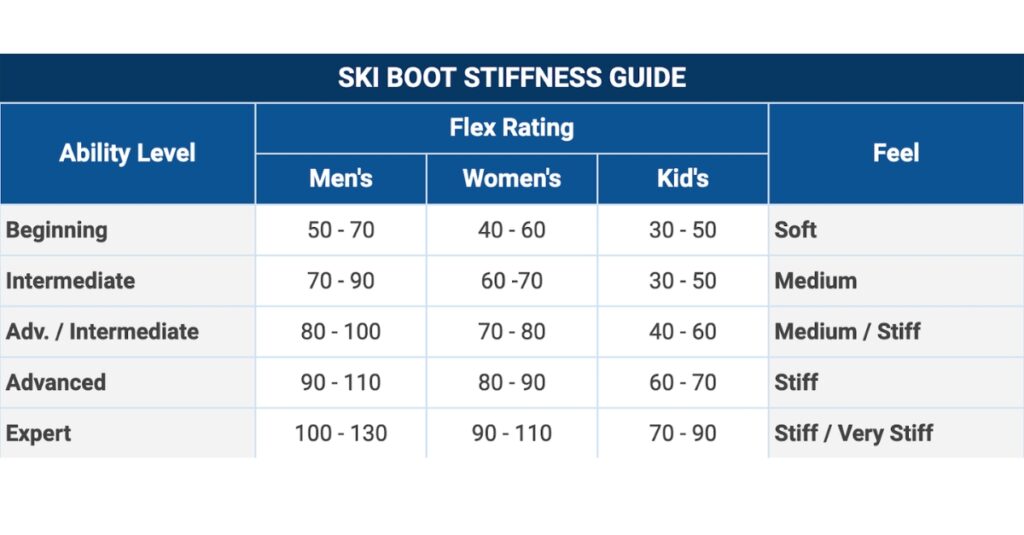
Rigid boots are less forgiving, and a beginner might injure himself if he uses “unforgiving” high flex index boots. Softer flex boots will be more comfortable, warm and tolerating, and therefore are more recommended for beginners.
Each manufacturer has slightly different flex indices, but in general this is the recommended flex level for each skier:
• A flex from 50 to 70 is designed for beginners to intermediate.
• A flex from 80 to 110 is designed for intermediate to advanced skiers.
• A flex from 110 to 150 is designed for expert skiers.
Ski Boot Dimensions
You might not expect this, but experts estimate that more than 45% of skiers are using ski boots that aren’t a good fit for them. Wearing a boot that is too large can cause blisters and foot fatigue, while a boot that is too small can cause ingrown nails and bruises. It is essential to pick a boot that perfectly fits your feet.
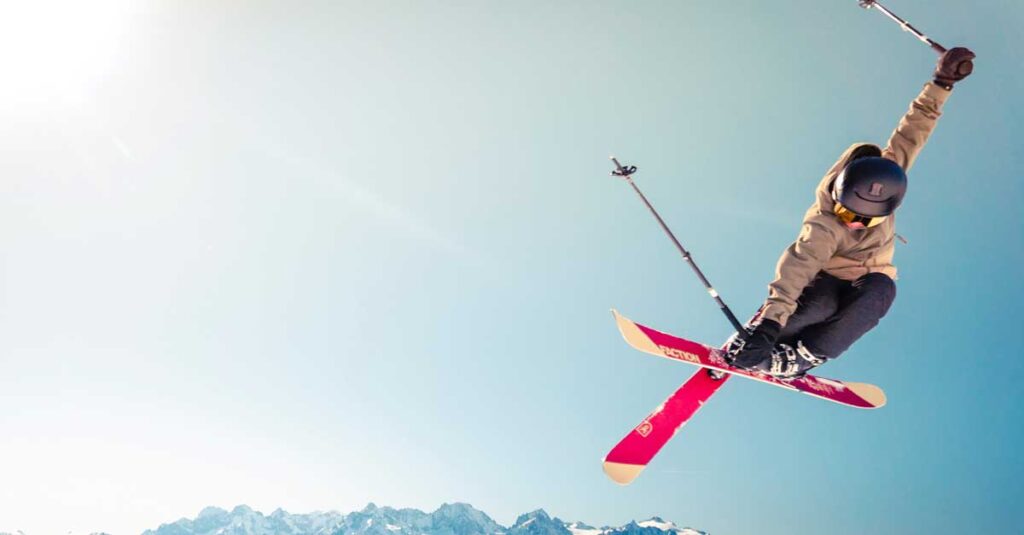
A) Ski Boot Lengths
The size of a ski boot is measured in mondo sizing. In other words, it is measured in centimeters according to the longest straight line that can be drawn on your foot.
The easiest way to measure this line is by putting your feet on a large piece of paper and drawing a line very close to your feet. Then remove your feet and measure the longest line—this is the mondo size of your feet.
B) Ski Boot Width (LAST)
Similar to the mondo size, there is a size measurement for the widest part of your feet called “last” size—the widest point of your foot. Often the widest part of your foot will be the ball of your foot, but for some feet the widest part will be the forefoot.
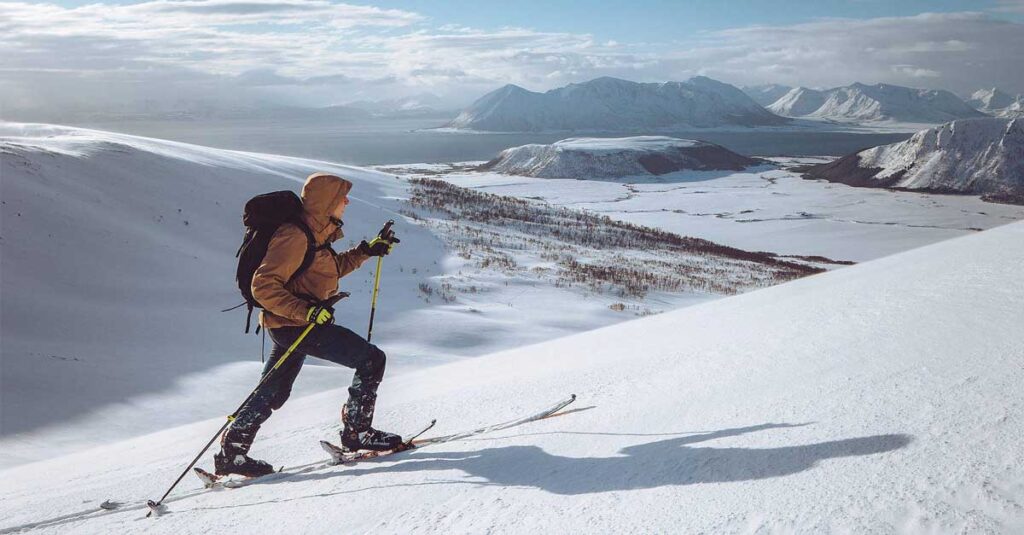
In addition to that measurement, you’ll need to add additional length according to your level. The narrower the width of your boot is, the greater the level of expertise needed. Usually 1 cm is considered a good width for beginners, 0.94 to 0.98 for intermediate, and 0.9 to 0.94 for experts.
If you have exceptionally wide feet, you can choose boots with more than 1 cm in order to feel comfortable.
c) Ski Boot Height (or Volume)
Ski boots usually come in different height options, often marked as low-volume and mid-volume. The height of your feet depends on your foot arch and the level of thickness of your feet. If your feet are large, you might be better off with a mid- or high-volume boot. And on the contrary, if your foot is narrow, you should try a low-volume boot and see if it’s comfortable for you.
Ski Boot Liners
Your foot has its unique shape, determined by its lumps and bumps. On the other hand, ski boot shapes are decided by the manufacturer and are not unique. Liners help mediate this difference, since all stock liners are thermoformable to a small degree to allow a truly customized fit.
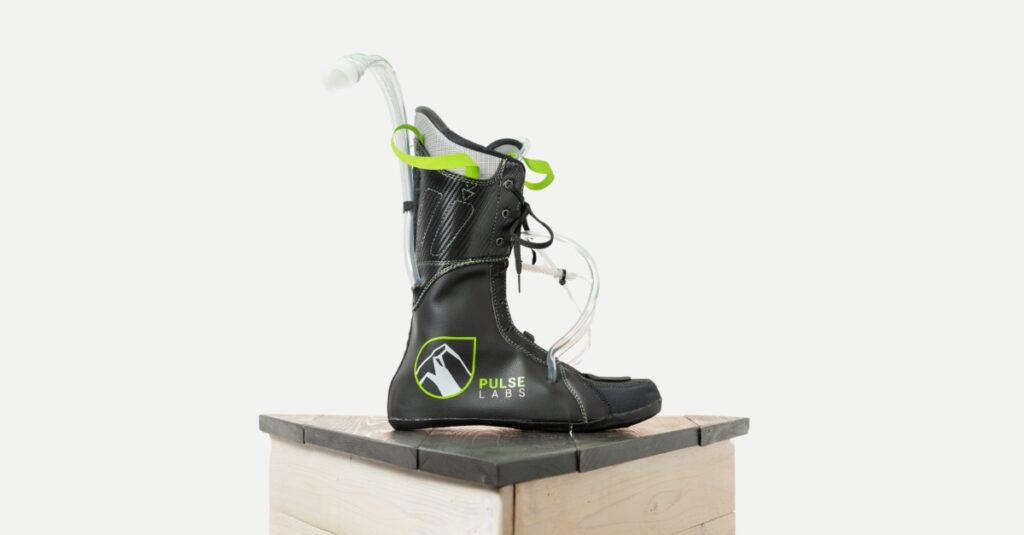
The more expensive the liners are, the more heat-moldable material. They provide more stability to the skier as well as additional level of isolation and warmth.
These ski boot liners are divided to three types:
1. Non-Moldable Liners
These liners are less flexible. While they add padding and stability for the skier, it will take more time for your feet to get used to them. It will probably take at least a couple of days for non-moldable liners to conform to your feet and change their form. At this point they will be comfortable and long lasting.
2. Liner Made of Thermo Foam
These liners are more pliable than the previous type mentioned. The thermoformable material will soften after a few hours and fit perfectly to your feet.
3. Thermoformable custom liners
While more costly, this type of liner is specially built to fit your feet. Few stores provide this service of molding your personal liners. There are kits you can buy online and DIY at home.
Velcro Strap
Ski boots with Velcro straps assist in the isolation and secure fastening of the ski boot. The Velcro straps keep the shin in contact with the tongue of the liner.
An intermediate to advanced skier will choose a bigger strap for its ability to retain the leg. For beginners, a small Velcro strap will suffice.
General Do’s and Don’ts when Buying Ski Boots
A) Be Honest with Yourself
There is no point in buying ski boots for advanced skiers if you are a beginner. As a matter of fact, you can do more harm than good if you buy rigid boots and cause yourself an injury.
B) Renting Boots Is an Option
Not sure what kind of boots you want? You can start by renting a pair and see if they are practical and comfortable. After a day or two, if you feel they are right for you, you can buy a new, similar pair.
C) Ask for Help
The salesperson in the store is there to sell, but also to provide guidance and advice. Ask him for his opinion, and he can help you get the best ski boots for your comfort and ski experience.
D) After-Sales Service
When buying ski boots, it is important to verify you have warranty and that the item can be exchanged if not damaged. Sometimes what seems amazing and comfortable in the store feels uncomfortable and is not practical on the ski track.
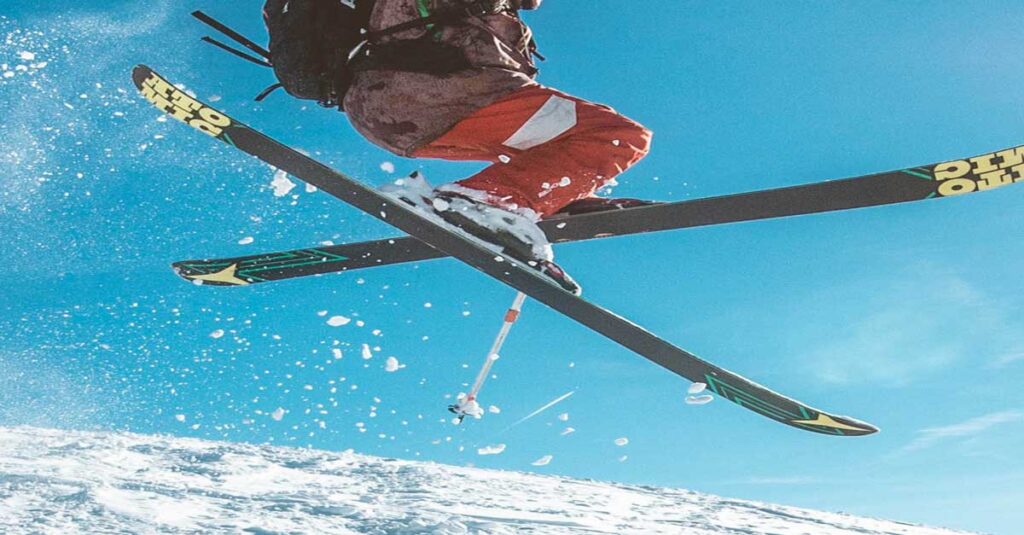
Your opinion is important to us!
Do you have more suggestions on how to choose ski boots? Let us know in the comments bellow or contact us!
